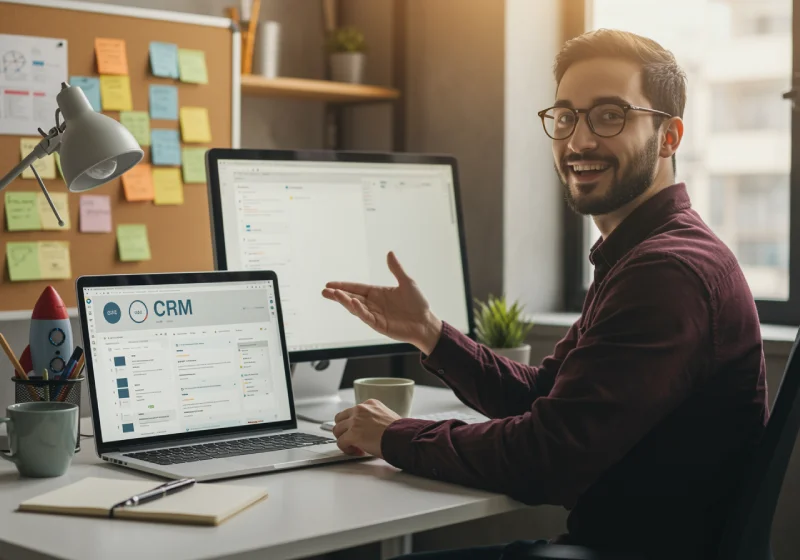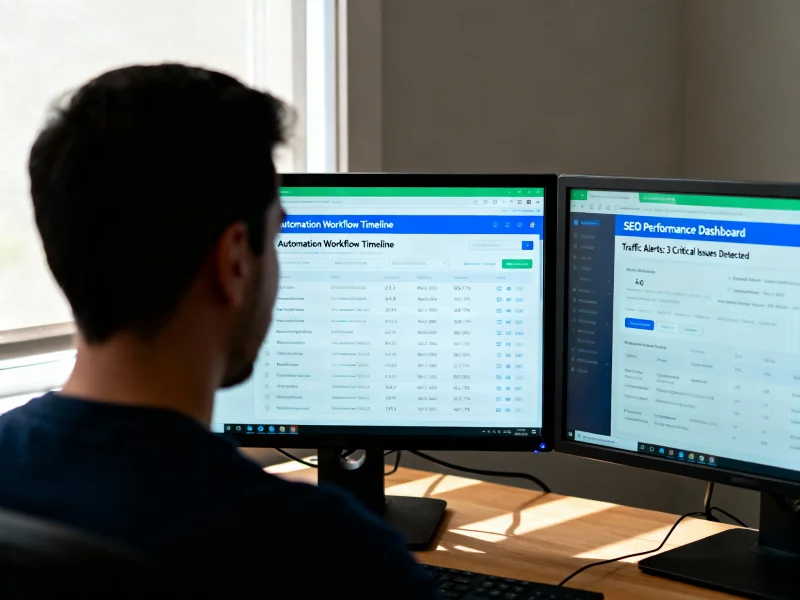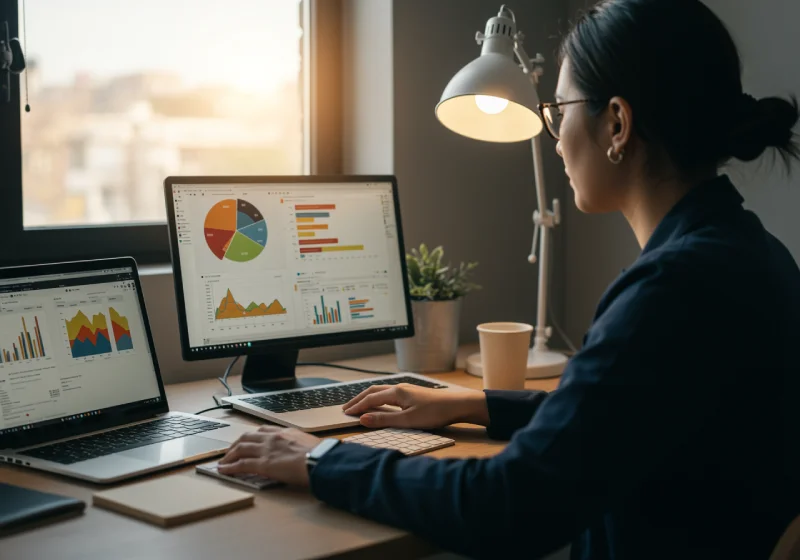Website Optimization Strategies: Enhancing User Experience With Internet Marketing Services
Are you looking to enhance your website's user experience and drive more traffic to your business? Website optimization strategies can help you achieve these goals by improving the speed, accessibility, responsiveness, and usability of your website. With internet marketing services at your disposal, you can leverage the power of search engine optimization (SEO), social media marketing, and email marketing to increase brand awareness and attract potential customers.
To start optimizing your website, begin with assessing its speed and accessibility. Slow loading times or broken links can deter users from staying on your site or even finding it in the first place. By ensuring that your website is fast and accessible on all devices, you can improve the overall user experience and increase engagement with your content. From there, focus on enhancing usability by streamlining navigation, simplifying forms, and providing clear calls-to-action that encourage visitors to take action. By implementing these strategies with the help of internet marketing services professionals, you can stay ahead of the competition while delivering a superior user experience for potential customers.
Optimize Your Website Speed and Accessibility
You'll want to make sure your website loads quickly and is easy for users to navigate so they can find what they need right away. A slow-loading website can frustrate users, causing them to abandon your site altogether. To optimize your website speed, consider optimizing images and videos, minimizing HTTP requests, and leveraging browser caching.
In addition to improving your website speed, you'll also want to ensure that it's accessible for all users. This means making sure that the text is readable on different screen sizes and devices and that there are no barriers preventing users with disabilities from accessing your content. You can achieve this by using alt tags for images, ensuring proper contrast between text and background colors, and adding captions or transcripts for multimedia content.
Improving the accessibility of your website not only enhances user experience but also makes it easier for search engines to crawl and index your pages properly. By optimizing both the speed and accessibility of your website, you'll create a seamless user experience that keeps visitors engaged with your content. The next step in enhancing user experience with internet marketing services is improving your website's responsiveness.
Improve Your Website's Responsiveness
To improve your website's responsiveness, there are three key points to consider. First, ensure that your website design is mobile-friendly to accommodate the increasing number of users accessing websites on their phones. Second, implement Accelerated Mobile Pages (AMP) to speed up loading times and improve user experience. Finally, optimize all images and videos for mobile devices to prevent slow load times and potential frustration for users. By following these tips, you can enhance the overall performance of your website and keep visitors engaged.
Use a Mobile-Friendly Design
Having a mobile-friendly design is essential for improving user experience and boosting your website's performance. With the widespread use of smartphones and tablets, users are accessing websites from various devices with different screen sizes and resolutions. If your website is not optimized for mobile devices, users will have difficulty navigating it, resulting in a frustrating experience that may drive them away.
To create a mobile-friendly design, you need to ensure that your website's layout adjusts automatically to fit any device screen size. This means that text should be easy to read without zooming in or out, buttons and links should be spaced out enough for easy tapping on touchscreens, and images should load quickly without distorting or taking too long to display. A well-designed mobile website can lead to increased engagement, longer visit times, and ultimately more conversions.
Transition: Now that you understand the importance of having a mobile-friendly design, let's move on to implementing accelerated mobile pages (amp) - another crucial step towards optimizing your website for better performance.
Implement Accelerated Mobile Pages (AMP)
Accelerated Mobile Pages (AMP) can significantly improve the loading speed and performance of your website on mobile devices, making it easier for users to access and engage with your content. AMP is an open-source project designed to create fast-loading web pages that work seamlessly across all types of mobile devices. By implementing AMP, you can reduce the load time of your website by up to 85%, which makes a huge difference in today's fast-paced digital world.
Not only does AMP positively affect user experience, but it also has a direct impact on search engine optimization (SEO). Google favors websites that load quickly and offer great user experiences, which means that implementing AMP can help boost your website's ranking in search results. So if you want to increase traffic to your website and provide a better experience for users on mobile devices, implementing Accelerated Mobile Pages should be at the top of your list.
By optimizing images and videos for mobile devices, you can further enhance the user experience on your website. This is especially important since most users now access the internet through their smartphones or tablets. So keep reading to learn more about how to optimize images and videos for mobile without sacrificing quality or speed.
Optimize Images and Videos for Mobile
Improving the loading speed of your website's media content can greatly enhance the overall mobile experience for your audience. Images and videos are often large files that take longer to load on mobile devices with slower internet connections. To optimize your media content for mobile, start by compressing images and videos without sacrificing quality. Use image editing tools or plugins to reduce file sizes and make sure they are in a format that is compatible with mobile devices.
Another way to optimize images and videos is by lazy loading, which means only loading the media when it becomes visible on the user's screen. This reduces initial page load time, making your website feel faster overall. Additionally, consider using responsive design techniques to ensure that images and videos are appropriately sized for different device screens. By optimizing your media content for mobile users, you can create a more seamless browsing experience that encourages visitors to stay on your site longer and engage with your brand further.
Transition into next section: Enhancing usability goes beyond just improving loading speed; it involves creating an intuitive interface and clear navigation paths that guide users through your site effortlessly.
Enhance Your Website's Usability
To enhance your website's usability, you need to simplify navigation and user interface. This means making it easy for users to find what they're looking for with minimal effort. Adding search functionality is also a great way to improve usability, allowing users to quickly find the content or products they need. Finally, using clear and concise language helps ensure that your message gets across effectively and efficiently, improving the overall user experience on your site.
Simplify Navigation and User Interface
By simplifying navigation and user interface, you'll make it easier for users to find what they're looking for on your website. A cluttered and confusing website can lead to frustration and a high bounce rate. To avoid this, here are three ways to simplify navigation and user interface:
- Use clear labels: Make sure the labels on your navigation menu are easy to understand and accurately describe what the page contains. Avoid using jargon or overly complicated words.
- Limit options: Too many choices can overwhelm users and make it difficult for them to determine where to go next. Keep your menu options limited to the most important pages on your site.
- Use visual cues: Incorporating icons or images into your navigation can help users quickly identify where they need to go next.
By following these simple tips, you'll create a more user-friendly experience that encourages visitors to stay longer on your site and explore more of what you have to offer. In the next section, we'll discuss how adding search functionality can further enhance usability on your website.
Add Search Functionality
Boost your website's usability by allowing visitors to easily search for specific content with the addition of a search bar. By adding this functionality, you give users the ability to quickly find what they're looking for without having to navigate through multiple pages or menus. This creates a more efficient and positive user experience, ultimately leading to higher engagement and conversion rates.
When implementing a search function on your website, it's important to make sure it's easy to locate and use. Typically, placing the search bar at the top of the page is ideal as it allows users to quickly find and utilize it. Additionally, consider using auto-complete or suggested searches as these can save time for users and increase their satisfaction with your site. With an intuitive search function in place, you'll be able to better meet the needs of your audience while simultaneously increasing engagement on your site. Now let's move onto another crucial strategy: using clear and concise language throughout your website content.
Use Clear and Concise Language
Improve your communication with visitors by using simple and straightforward language that paints a clear picture of your products or services. Avoid using technical jargon or complicated vocabulary that could confuse potential customers. Instead, use concise and informative language that is easy to understand.
Your website should be engaging, informative, and easy to navigate. Using clear and concise language can help you achieve these goals. Visitors will appreciate the simplicity of your message, which will make it easier for them to engage with your content. By doing so, you can improve their user experience on your website.
As you strive to enhance the user experience on your website, consider leveraging internet marketing services. These services can help you reach a wider audience and promote your brand more effectively online. With the right strategies in place, you can create a seamless user experience that drives conversions and boosts customer loyalty.
Leverage Internet Marketing Services
You can enhance your website's user experience by utilizing internet marketing services. These services are designed to help improve the visibility and relevance of your site, making it easier for users to find what they need. By leveraging these tools, you can attract more traffic to your website, increase engagement with your audience, and ultimately boost sales.
One of the most effective internet marketing strategies is search engine optimization (SEO). This involves optimizing your website's content and structure to make it more attractive to search engines like Google. By targeting relevant keywords and creating high-quality content that engages users, you can improve your ranking on search results pages. This makes it easier for potential customers to find you when searching for products or services related to your business.
Another powerful tool in the internet marketing arsenal is social media marketing. Platforms like Facebook, Twitter, and Instagram offer a wealth of opportunities for businesses looking to connect with their target audience. By creating engaging content that resonates with users, you can build a loyal following and drive traffic back to your website. Social media also provides valuable insights into customer behavior and preferences, allowing you to fine-tune your messaging and optimize your overall strategy.
By leveraging internet marketing services like SEO and social media marketing, you can create a website that delivers an exceptional user experience while driving measurable results for your business. However, simply implementing these strategies isn't enough - it's essential that you continuously monitor and optimize their performance over time. In the next section we'll explore some best practices for monitoring how well your website is performing so that you can ensure its ongoing success.
Monitor Your Website's Performance
As you continue to leverage internet marketing services to enhance your website's user experience, it's important to monitor your website's performance regularly. By using analytics tools, you can track website traffic and user behavior, allowing you to identify areas that need improvement. With this information, you can continuously improve your website's performance and user experience, ensuring that your visitors have the best possible experience on your site.
Use Analytics Tools
By utilizing analytics tools, you can gain valuable insights into your website's performance and make data-driven decisions to enhance the user experience. These tools allow you to monitor various metrics such as page views, bounce rates, click-through rates, and average time spent on each page. With this information, you can identify which pages are performing well and which ones need improvement.
Analytics tools also provide demographic data about your visitors such as their age range, location, and interests. This information helps you understand your target audience and tailor your content to meet their needs. By analyzing your website's performance using these tools, you can optimize your site for better user engagement and ultimately drive more conversions. In the subsequent section about 'track website traffic and user behavior', we will explore how to use this information to improve specific aspects of your site.
Track Website Traffic and User Behavior
Tracking website traffic and user behavior gives you a clear picture of how visitors interact with your site, allowing for informed decisions to be made in improving overall engagement. By using analytics tools like Google Analytics, you can track metrics such as bounce rate, time spent on site, and pages per session. These metrics provide insights into what visitors are looking for on your website and where they may be experiencing issues.
In addition to tracking basic metrics, more advanced analytics tools allow you to track user behavior through heat maps and click tracking. Heat maps show where users click most frequently on a page while click tracking shows the exact path a user takes through your website. These tools provide valuable information about which areas of your website are receiving the most attention and which may need improvement. With this data, you can make informed decisions about how to optimize your website for better performance and user experience. By continuously improving your website's performance and user experience, you can ensure that visitors keep coming back for more.
Continuously Improve Your Website's Performance and User Experience
To continuously improve your website's performance and keep visitors engaged, you need to prioritize regular updates and adjustments based on user feedback and behavior. This means staying up-to-date with the latest trends in web design, content creation, and search engine optimization (SEO). Here are a few strategies to consider:
- Conduct regular user testing to identify pain points and areas for improvement.
- Use analytics tools to track website metrics such as bounce rate, time on site, and conversion rates.
- Implement A/B testing to compare different versions of your website or landing pages.
By taking these steps, you can ensure that your website is always evolving to meet the needs of your audience. This will not only enhance the user experience but also increase engagement, conversions, and ultimately drive more traffic to your site.
Frequently Asked Questions
What are some specific factors that can affect website speed and accessibility?
To optimize website speed and accessibility, focus on reducing image and video file sizes, minimizing HTTP requests, and using a content delivery network. Use caching to reduce load times for returning visitors.
How can website responsiveness be measured and improved?
To measure website responsiveness, use tools like Google PageSpeed Insights and GTmetrix. Improving it involves optimizing images, reducing server response time, enabling browser caching, and minimizing HTTP requests.
Are there any common usability issues that can be easily fixed on a website?
You can easily fix common usability issues on your website by ensuring fast loading times, clear navigation, concise content, and prominent calls-to-action. Improving user experience will increase engagement and site traffic.
What are some examples of internet marketing services that can help improve a website's visibility and traffic?
Boost your website's visibility and traffic with internet marketing services like SEO, PPC advertising, social media marketing, and email marketing. These strategies can improve your search engine rankings, drive more visitors to your site, and increase engagement with potential customers.
What tools or metrics should be used to monitor a website's performance over time?
To monitor your website's performance over time, use tools like Google Analytics to track metrics such as traffic, bounce rate, and conversion rates. Regularly analyzing this data can help you identify areas for improvement and make informed decisions to enhance user experience.
Conclusion
Congratulations! By implementing the website optimization strategies outlined in this article, you have taken steps towards enhancing your website's user experience and ultimately driving more traffic to your site.
Firstly, optimizing your website speed and accessibility is crucial to ensuring that users can easily navigate your site and find what they are looking for quickly. Improving your website's responsiveness means making sure it is mobile-friendly and loads quickly on all devices. A user-friendly site will keep visitors engaged longer, increasing the likelihood of conversion.
In addition, leveraging internet marketing services like search engine optimization (SEO) and social media marketing can help increase brand awareness and drive even more traffic to your site. And by monitoring your website's performance regularly, you'll be able to make adjustments as needed to continue improving the user experience.
Overall, these strategies work together to create a seamless user experience that will keep visitors coming back time and time again. Keep up with these optimization efforts consistently for long-term success in online marketing.









